Lunar eclipse 2022: Spectacular ‘Blood moon’ happens for the last time in years - as it happened
The world is about to see a total lunar eclipse, or blood moon, for the last time in years.
There won’t be another opportunity to see the celestial event until 2025.
A total lunar eclipse happens when the Earth slots in exactly between the Moon and the Sun, hiding the two from each other. It means that light must travel through Earth’s atmosphere on the way to the Moon, which turns it red as it does.
The event will begin around 3am eastern time, and will peak in a total eclipse around three hours later, before ending another three hours after that. It will be visible across eastern Asia, Australia, the Pacific and North America.
Lunar eclipses typically happen about every year-and-a-half. But the schedule this time means that there won’t be another chance to see a blood moon for longer than that: the next will appear on 14 March, 2025.
Hello and welcome...
07:40 , Andrew Griffin
... to The Independent’s live coverage of the last total lunar eclipse until 2025.
What’s happening today?
07:50 , Reuters
A total lunar eclipse occurs when the Earth casts its shadow completely over a full moon, blocking reflection of all direct sunlight from the lunar orb and dimming the color of the moon to a reddish hue, hence the term “blood moon.”
This is only possible when the orbits of the Earth, moon and sun align so that the moon is directly behind Earth relative to the sun. Otherwise, the moon passes above or below Earth’s shadow because its orbit around Earth is usually tilted relative to Earth’s orbit about the sun.
Why is it red?
07:50 , Reuters
The reddish appearance of the lunar surface - the moon does not entirely disappear from view - is caused by rays of sunlight around the outer edge of the eclipse shadow, or umbra, being filtered and refracted as it passes through Earth’s atmosphere, bathing the moon indirectly in a dim copper glow.
The degree of redness depends on atmospheric conditions that vary with levels of air pollution, dust storms, wildfire smoke and even volcanic ash.
How rare is a ‘blood moon’?
07:50 , Reuters
Total lunar eclipses occur, on average, about once every year and a half, according to NASA. But the interval varies. Tuesday’s event will mark the second blood moon this year, following one in mid-May. The next one is not expected until March 14, 2025.
Where is the total lunar eclipse visible?
07:51 , Reuters
Tuesday’s eclipse will be visible across eastern Asia, Australia, the Pacific and North America. Skywatchers in Asia and Australia will see it with their evening moonrise, while the spectacle will play out for observers in North America in the early morning hours before the moon sets. It will be visible to the naked eye wherever skies are clear in those regions.
When can you see the blood moon?
07:53 , Andrew Griffin
The entire eclipse will unfold over a period of nearly six hours as the moon gradually edges into the Earth’s paler, outer shadow, its “penumbra,” then enters the Earth’s darker, inner shadow, or “umbra,” before reaching totality and eventually emerging from the other side.
On the West Coast of the United States, the whole display will run from 1.01am PST until just before 6am, with the total eclipse phase lasting about 90 minutes, peaking at 3am.
Why is this the ‘beaver’ blood moon?
07:55 , Andrew Griffin
Tuesday’s event will coincide with the “Beaver moon,” a moniker for November’s full moon adopted by the Old Farmer’s Almanac supposedly from Algonquian languages once spoken by Native Americans in the New England territory. When combined with the phenomena of a total lunar eclipse, it is widely referred to as a “Beaver blood moon” in the United States.
(It will also coincide with Election Day in the US, which won’t happen until 2394. The collision of the two appears to have led to panic among astrologers, according to Rolling Stone.)
Eclipse begins – but there’s still some time until it peaks
08:36 , Andrew Griffin
The eclipse began, technically, about half an hour ago. But there’s more than two hours until it actually peaks. (That happens at 3am pacific time, on the west coast where the eclipse is most likely to be seen.)
Live stream the eclipse
08:38 , Andrew Griffin
If you’re not in the right place to see the eclipse – or there is something else getting in the way, such as the weather or your unwillingness to get out of bed – then you can watch it from home. Here’s a live stream, which begins in half an hour.
The total lunar eclipse has begun!
10:16 , Andrew Griffin
The Moon, Sun and Earth are now lined up so that there is a total lunar eclipse. If you’re in the right place, then looking at the Moon should give you a full view now.
It will last for about an hour and a half.
Pictures of the red ‘blood’ moon start to arrive
10:23 , Andrew Griffin
Pictures of the lunar eclipse are starting to flow in. Most of these are clearly just from people’s phones, and no doubt we’ll get some more spectacular and clear-looking ones later. But here’s a taster:
It’s freezing cold outside
But I’m out here watching the full lunar eclipse ❤️ pic.twitter.com/JFtgimBbj4— Katrina (@lWontApologize) November 8, 2022
Eclipseを撮影しました pic.twitter.com/kjhns4Yc2I
— Morite2(もりてつ) (@morite2toeic) November 8, 2022
Some people are having a bit of trouble, however, thanks to the clouds.
The total lunar #Eclipse2022 over @CBS58!! There’s supposed to be a full moon there but…eclipse. Clouds.
(I grant permission for @CBS58 and @JustinTGee to use this photo in perpetuity). pic.twitter.com/DzOLBU72pP— Mike Curkov (@MikeCurkov) November 8, 2022
Eclipse glows red above Melbourne
11:35 , Andrew Griffin
Here are some pictures from Williamstown in Melbourne, where the “blood moon” looks suitably spectacular and/or terrifying, depending on your persuasion.
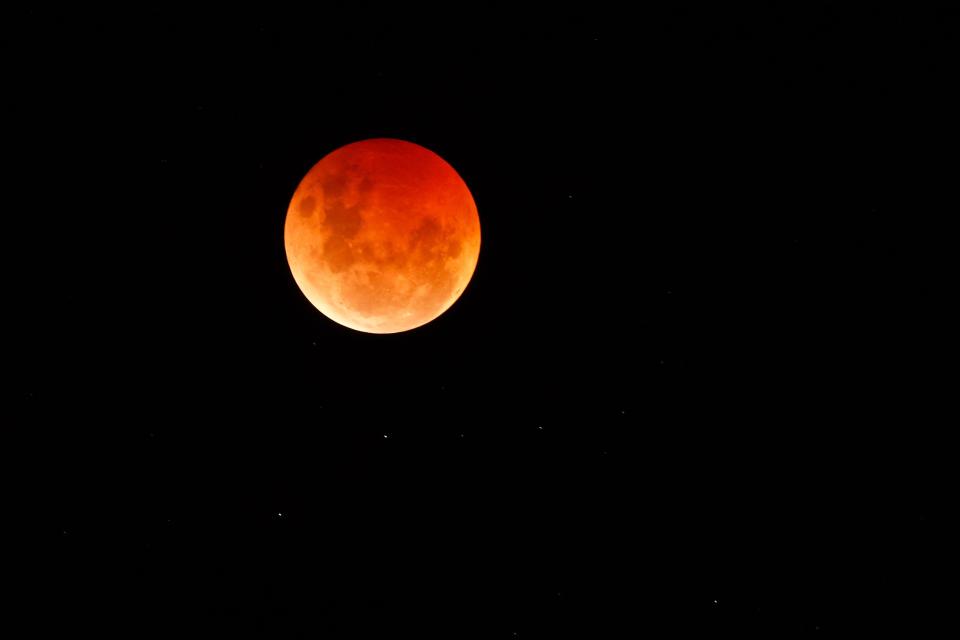
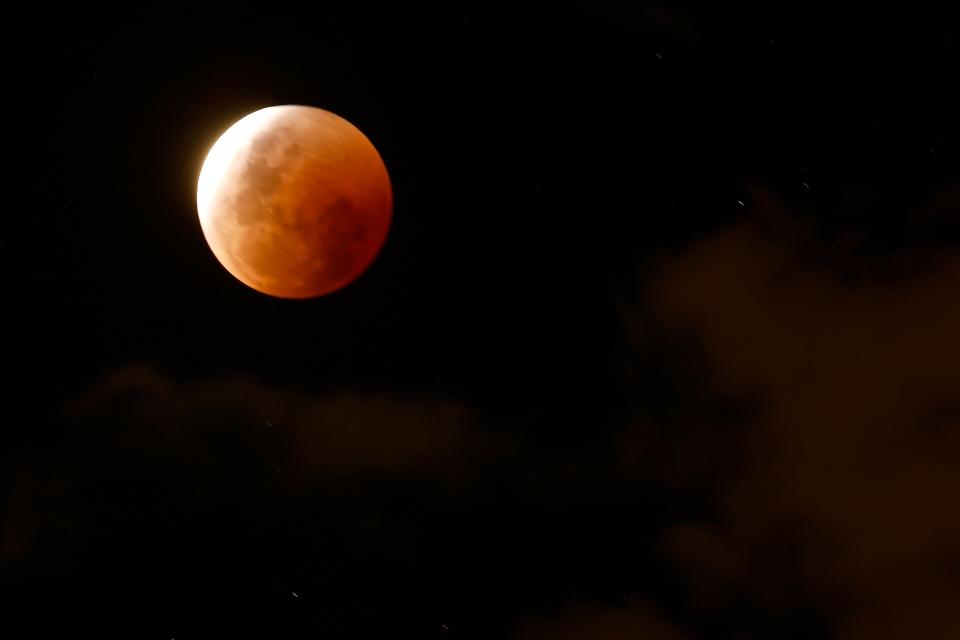
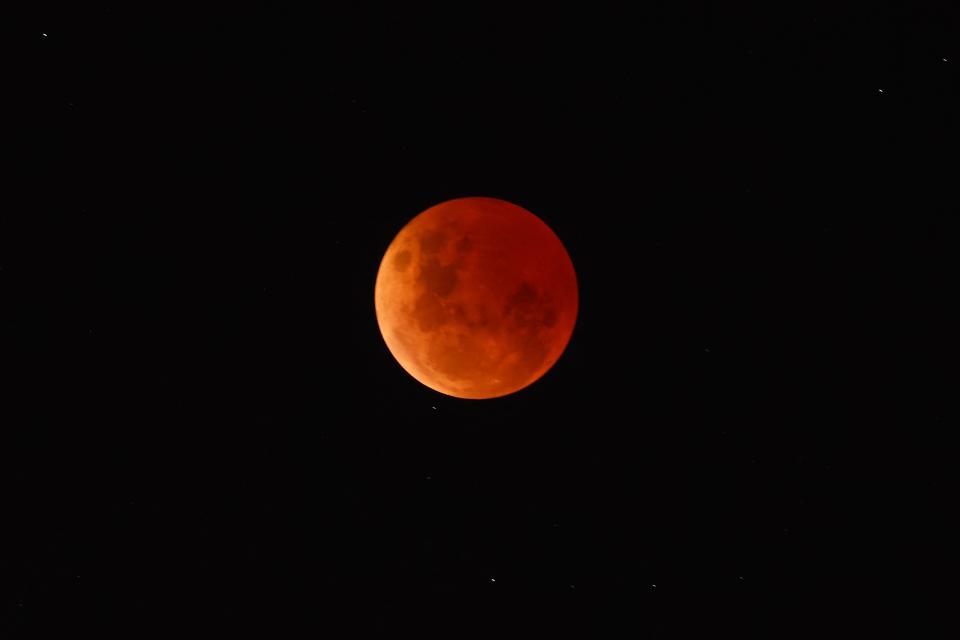
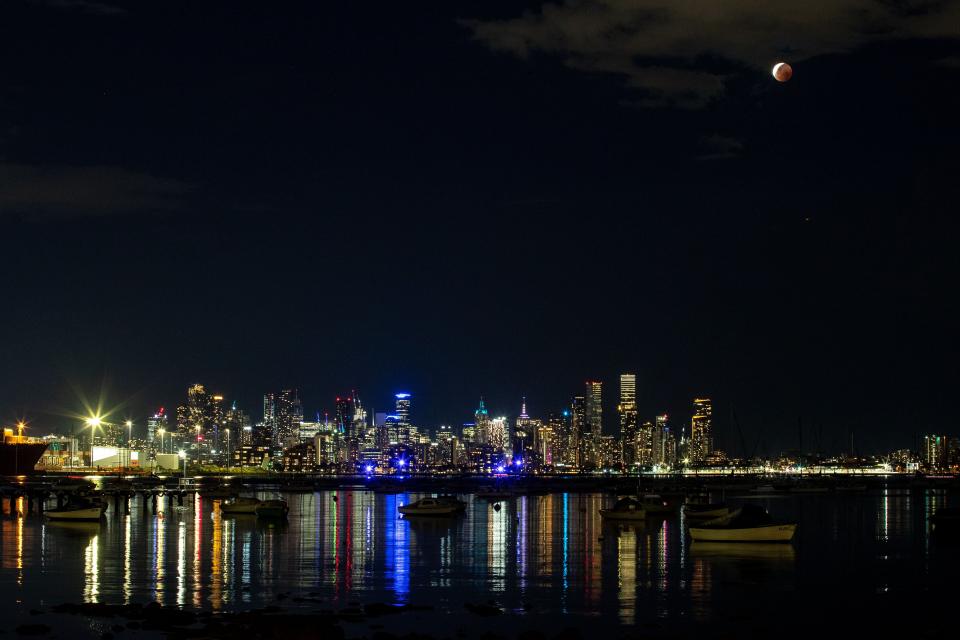
Australian surfers paddle beneath glowing red moon
11:37 , Andrew Griffin
And here’s another from Australia, at Manly Beach in Sydney.
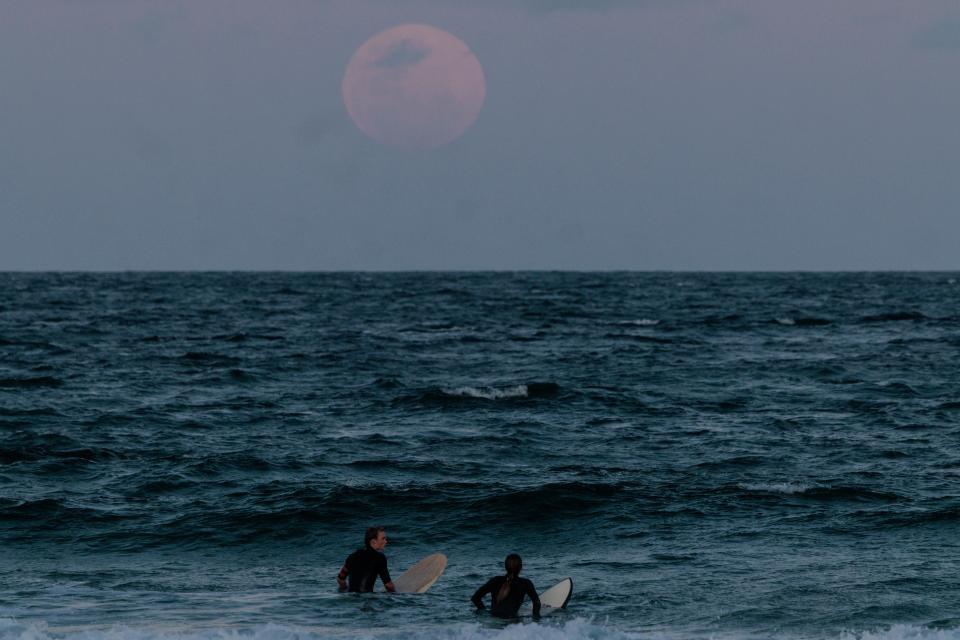
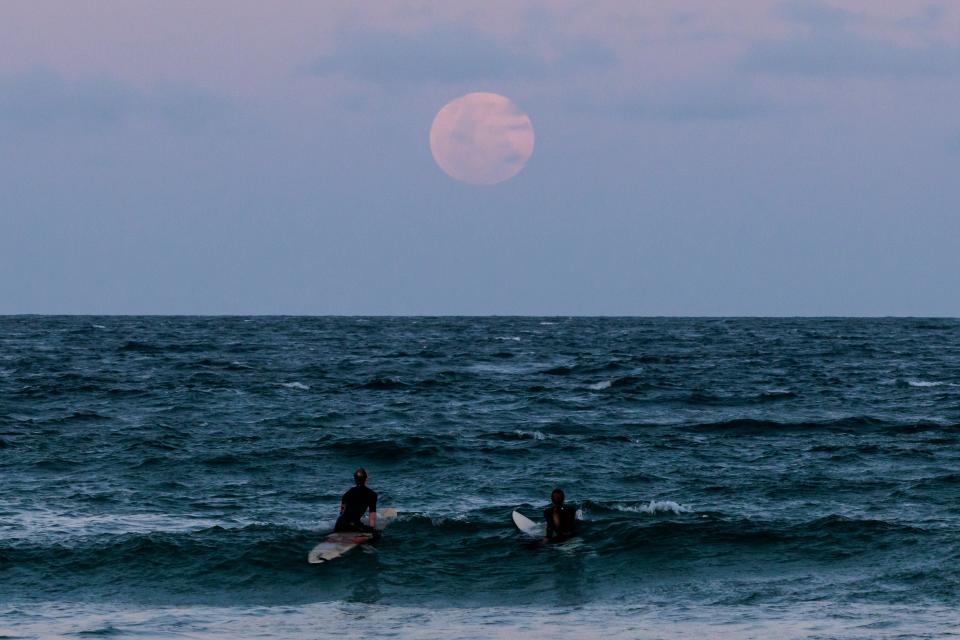
South Koreans gather for better view of eclipse
11:40 , Andrew Griffin
In Goyang, northwest of Seoul, people used advanced equipment to get a good look at the reddening Moon:
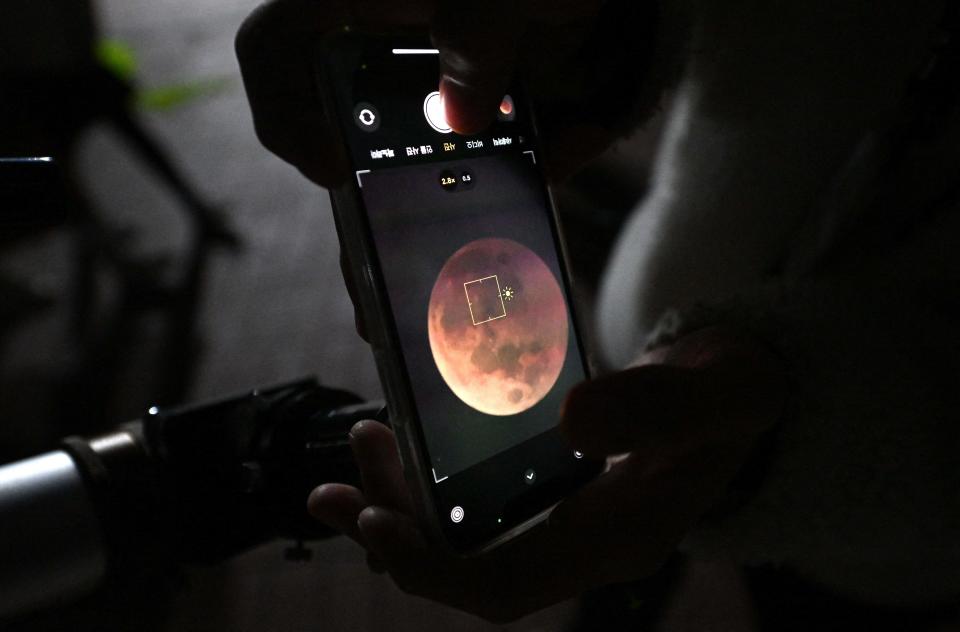
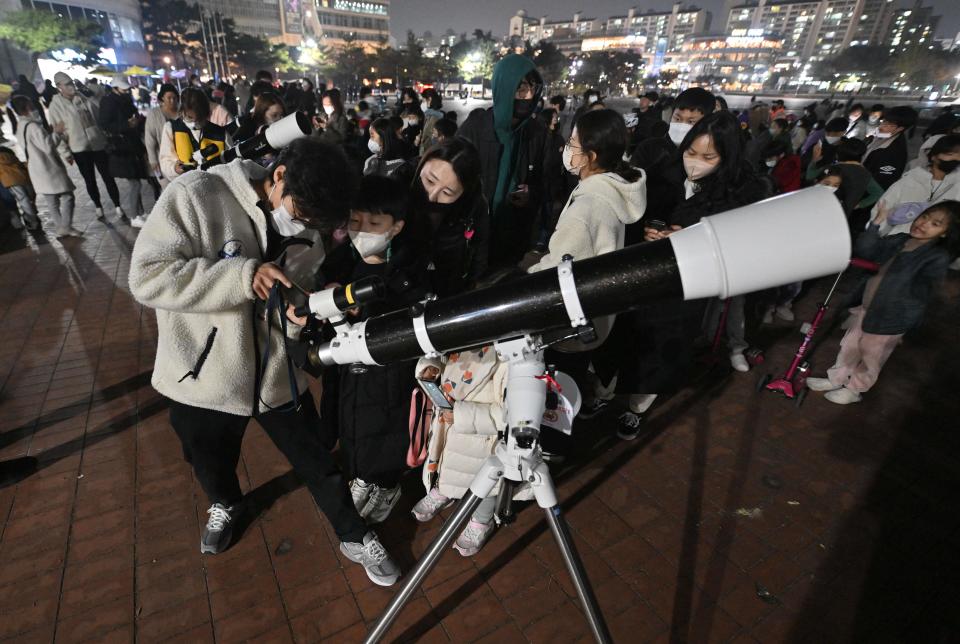
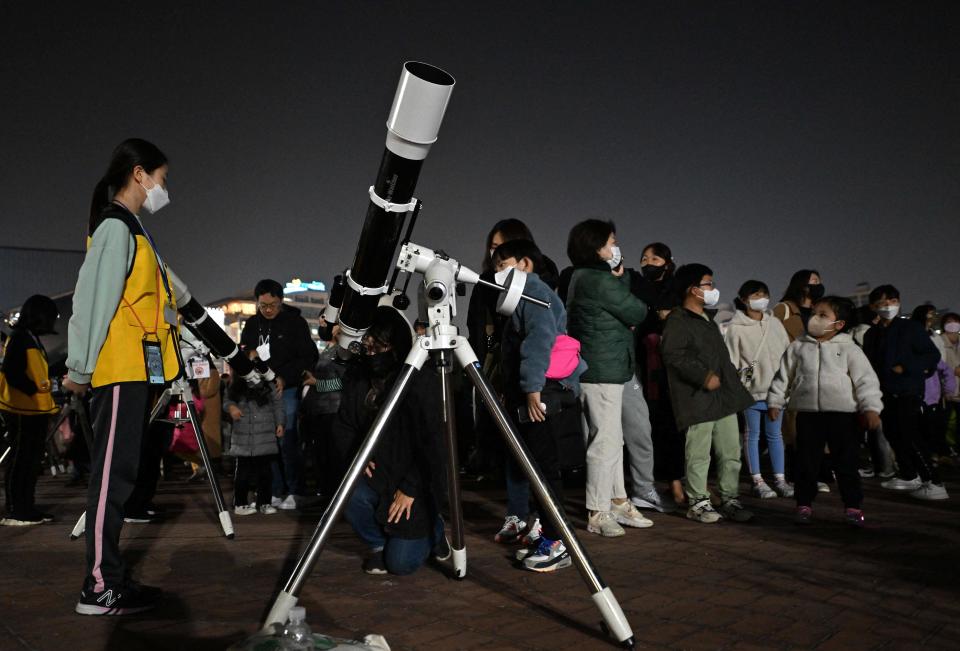
The total lunar eclipse is over
11:41 , Andrew Griffin
The Earth, Moon and Sun have moved out of arrangement and the total lunar eclipse is now over.
If you’ve missed it, don’t despair: it’s still partial for a while, so you can get some of the experience. And if not then there are plenty of photos and videos to enjoy.
Partial lunar eclipse ends
12:38 , Andrew Griffin
The partial lunar eclipse is now over, too.
For the next hour, there is a penumbral eclipse. That happens when the faint outer shadow of the Earth appears on the Moon – but it’s easy to miss, because most of the lunar surface is lit by sunlight.

